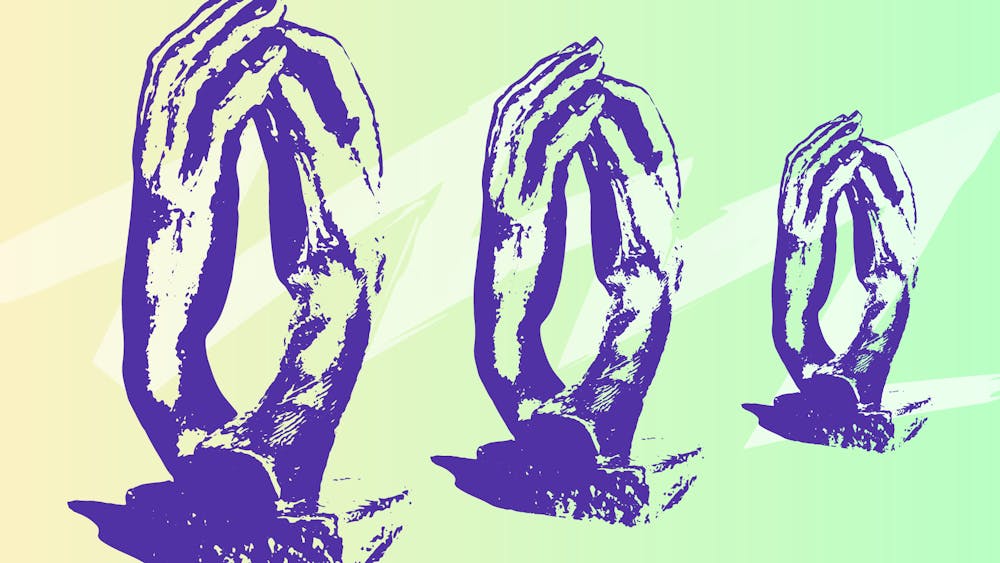Hands, generally speaking, are the bane of an artist’s existence. Anyone with experience drawing from anatomy knows why: Between five fingers, as many fingernails, and a smattering of knuckles, even the most practiced artists easily lose patience. Yet, Auguste Rodin goes against the grain. “I have always,” declares the famed French sculptor, “had an intense passion for the expression of the human hands.” The Rodin Museum’s latest exhibition delves into his lifelong fascination with that most troublesome body part.
On display are a selection of works exploring the hand motif, running the gamut from fragments to large–scale masterpieces like The Burghers of Calais. Throughout, the exhibition begs several questions: What exactly is the smallest unit of feeling? Can it be a single body part? And never mind the eyes—how does one distill complex emotions into a hand? Indeed, Rodin’s hands are vectors of suffering, sensuality, and, ultimately, wonder.
These sculptures, dating from various moments in Rodin’s career, offer a sustained view of the artist’s creative inspiration. As much as Rodin innovated, his references are old–school through and through; Youth Triumphant draws on classical Greek lore to pair two women in a fatal embrace. But besides Greek mythology, there’s another canon that occupied Rodin’s imagination.
Much has been written about Rodin’s Catholicism, and his fascination with Biblical motifs is on full display here. The Hand from the Tomb reimagines the myth of Belshazzar to show a hand miraculously surging from a rock. Just as striking is The Hand of God, heavy with Biblical allusions; two half–formed figures, implied to be Adam and Eve, embrace in a wad of earth held by a mighty hand.

The sculpture raises the question of how Rodin saw himself. As a creator of sorts, did he consider himself divine by implication? Viewers will wonder how to reconcile the artist’s ego with his faith in an omnipotent God. Reading into the sculpture, one sees that Rodin was troubled by the idea that his relationship to his sculptures finds a parallel in his God’s relationship to him. The visual frenzy of the piece attests to this tension, with the clumpy, rough–hewn material testifying to the sculpture’s mixture of paternal goodwill and domination.
But Rodin is at his best when he cuts out the visual noise. One of the show’s standouts, The Cathedral, does just that, with its two hands vertically arranged, fingers intertwined in imitation of Gothic rib vaulting. All that is not to say that Rodin’s imagination is limited to the religious canon—he is just as attuned to the prosaic, to the little miracles of everyday life.

Case in point: Another standout of the exhibition, Two Hands, takes on a relatively banal subject. The pithy title is an apt choice for this unassuming work, which shows a slim–fingered hand gently laid on top of a bulkier, more masculine one. The smaller hand was likely modeled on Rodin’s longtime muse Rose Beuret. A few biographical details are useful here: We know that she bore his son. We know that they married in 1916, shortly before both of their deaths. And we know that he cheated on her relentlessly.
Rodin was a notorious womanizer, and critics often point to his sexuality as the through line of all his work. True enough, Rodin once declared to the painter William Rothenstein: “People say I think too much about women. But what else is there to think about?” But, in this most intimate sculpture, sexuality is curiously absent. Rather, Two Hands offers a moment of unexpected tenderness.

Nestled on a carefully wrought bronze platform, these hands were sculpted with all the regularity and care lacking in the frenzied The Hand from the Tomb. Of note is the vulnerability of both hands, palms open to the viewer. Indeed, this piece sees the sculptor in awe of his lover, wondering at the texture of her skin, the upward slope of her graceful fingers. Again, viewers may detect a paternal undertone—the creator humbled before his creation. Two Hands, with its implications of tenderness, amounts to one of the most understated moments of the exhibition, yet surely the most moving. Nevertheless, the very sense of wonder that elevates this sculpture is difficult to trace in the slapdash layout of the show.
Working within the bounds of the compact museum building, organizers have positioned many sculptures against the wall of the central hall. In some cases, this arrangement obscures crucial details of the sculptures. In particular, Youth Triumphant is shelved against a wall, leaving the viewer in the dark about the full dynamic between the sculpture’s two figures. Such instances of awkward placement are made all the worse by the show’s general lack of direction.
With exhibition pieces freely interspersed with the overall collection, viewers are left with a confusing viewing experience. Organizers have scattered Rodin's hand sculptures throughout the main hall, which opens into rooms with totally unrelated works. In such a small space, where so many pieces intermingle, clearer signposting would be welcome.
All that is to say that the exhibition remains successful at showing Rodin’s delight in the everyday. Browsing these works, viewers will share the artist’s conviction that “life is everywhere, but rarely indeed does it come to complete expression.” Lucky for us, Rodin toiled so that these sculptures bring all life's beauty to light.

